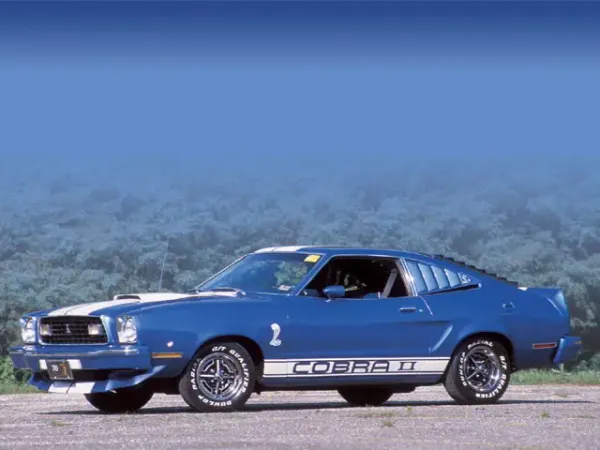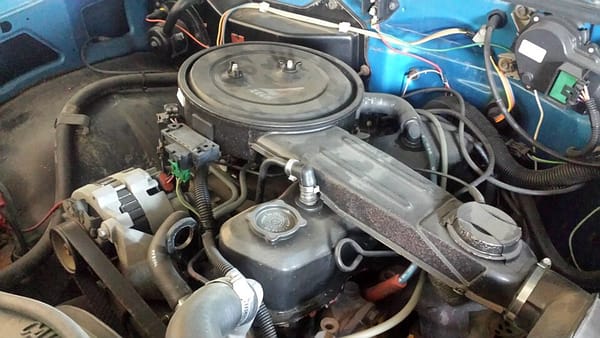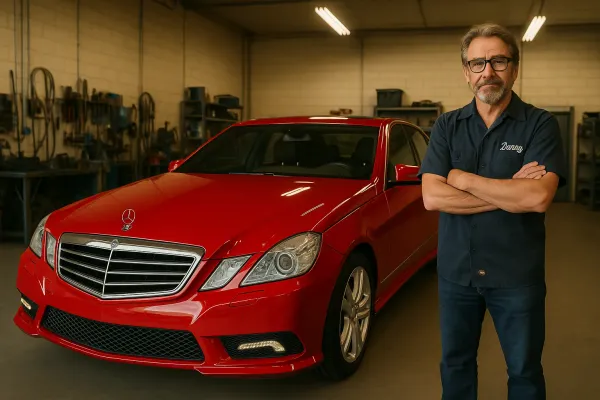Which Ford F-150 is Actually Worth It in 2025? A Mechanic Breaks Down the Numbers
Author Bio: Danny is a co-owner of Driveway Dreams, an ASE Certified Master Technician with over 26 years of experience, and previous freelance writer for Car Engineer. For more than 17 years, he's owned and operated his own independent repair shop in Livonia, Michigan. Subscribe and follow, Danny!

Here's the deal.
You want an F-150. The American jackhammer on four wheels. It tows. It hauls. It carries drywall, dirt bikes, and broken dreams without blinking.
But here’s the brutal truth: Most used F-150s? They’re landmines with cupholders.
Some run forever on bad oil and hope.
Others explode spark plugs into orbit because Ford skimped on threads.
Some are tanks. Some are grenades.
You’re not just buying a truck. You’re gambling on 70 years of engineering decisions.
So if you want the truth—and not just some YouTube fluff about towing capacity—buckle up.
Because we’re diving into every generation that matters.
Let’s get greasy.
Danny's Insider F-150 Buyer's Guide
After 26 years working on America's best-selling truck, I've compiled a comprehensive guide on how to avoid the money-pit F-150s and find the gems. Get my generation-by-generation breakdown of what to look for (and what to run from).
Join 12,000+ enthusiasts getting my insider tips
1948–1979: Vintage Steel and Stubborn Reliability
This is where the legend started.
No frills. No filters. Just raw metal and roaring simplicity.
The dashboards are steel. The bumpers are sledgehammers. The suspensions are leaf springs on prayers.
These weren’t built to impress. They were built to outlive the driver.
The engines? Dead simple torque monsters.
Carbureted 300 I6s. 302 Windsors. 460 big blocks that could rip tree stumps out of frozen ground.
But let’s get real: These trucks are now antiques.
They smell like oil and regret. And most of them are two bad winters away from dissolving into rust.
Evidence:
- Engines: 300 I6, 302 V8, 460 V8. Carbureted torque monsters. Dead simple.
- Reliability: Legendary. But only if they’ve been rebuilt or garage-kept.
- Common Issues: Rust. Brake fade. Archaic safety. Seals that leak for fun.
- Price: $3k for junkers, $20k+ for restored classics.
- MPG: Single digits. Don't ask.
- Sold Price Trends: Prices up 10–15% year-over-year for restored trucks; barn finds stagnant or declining due to restoration costs. Hemmings 2024 F-Series Classic Pricing Guide
- Common Repairs & Parts: Brake booster ($120), carb rebuild kits ($50), fuel pumps ($30), full frame restoration ($2,000+ DIY, $6,000 shop)
Shop Story: Guy rolls in with a '76 F-150.
Body looked mint until we lifted it.
Frame was one rainstorm from folding in half. He laughed. Drove it home anyway.
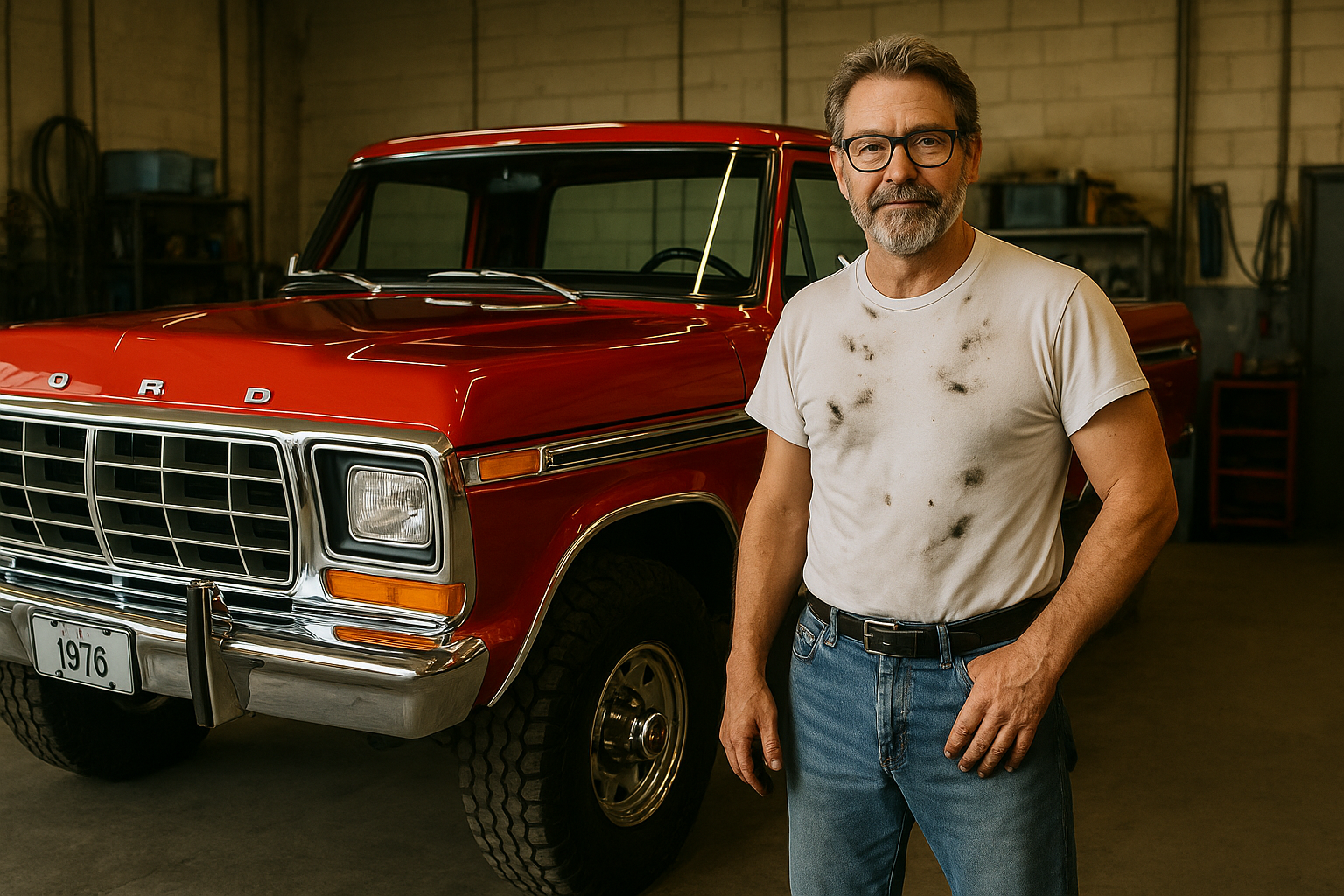
Verdict: Great for nostalgia, weekend shows, or farm use.
Not great for commuting or city life.
You'll spend more time under it than in it.
Unless you’re a wrench-turner with a soft spot for steel dashboards and bench seats, keep walking.
Shop Gold: The 1976 Highboy That Won’t Die
Listen—if you're hunting through pre-80s Fords, keep your eyes peeled for a '76 Highboy.
Real ones have a divorced transfer case, a factory lift, and Dana 60s out back.
They sit taller, haul harder, and eat potholes for lunch.
People mistake a lifted '78 for the same thing—don’t fall for it.
Real Highboys are climbing past $25k now, and they’ve got the bones to back it up.
1980–1986 (7th Gen "Bullnose"): Tough, Cheap, and Ugly in the Right Way
These were the blue-collar trucks of the '80s.
The kind of rig you’d find on a jobsite covered in mud with 300k miles and still starting on the first crank.
Nothing pretty. All function.
These things were built like toolboxes with wheels—angular, simple, and impossible to kill if you had duct tape and carb cleaner.
Evidence:
- Engines: 300 I6, 302/351 V8s. EFI appeared in ‘85.
- Known For: Surviving nuclear winters. The 300 I6 is a cockroach of an engine.
- Issues: Rust, vacuum gremlins, weak carbs (pre-85), crusty automatics.
- Price: $3,000–$10,000 depending on condition.
- Sold Price Trends: Prices have increased modestly (~5%) for clean examples. Junkyard runners still flat or declining.
- Common Repairs & Parts: Fuel pumps ($45), vacuum hose kits ($25), rebuilt carbs ($200), automatic transmission rebuilds ($1,400+)
Shop Story: Customer brought in a '84 with 350k.
Ran like a tractor.
He refused to sell it. Said it outlived his marriage.
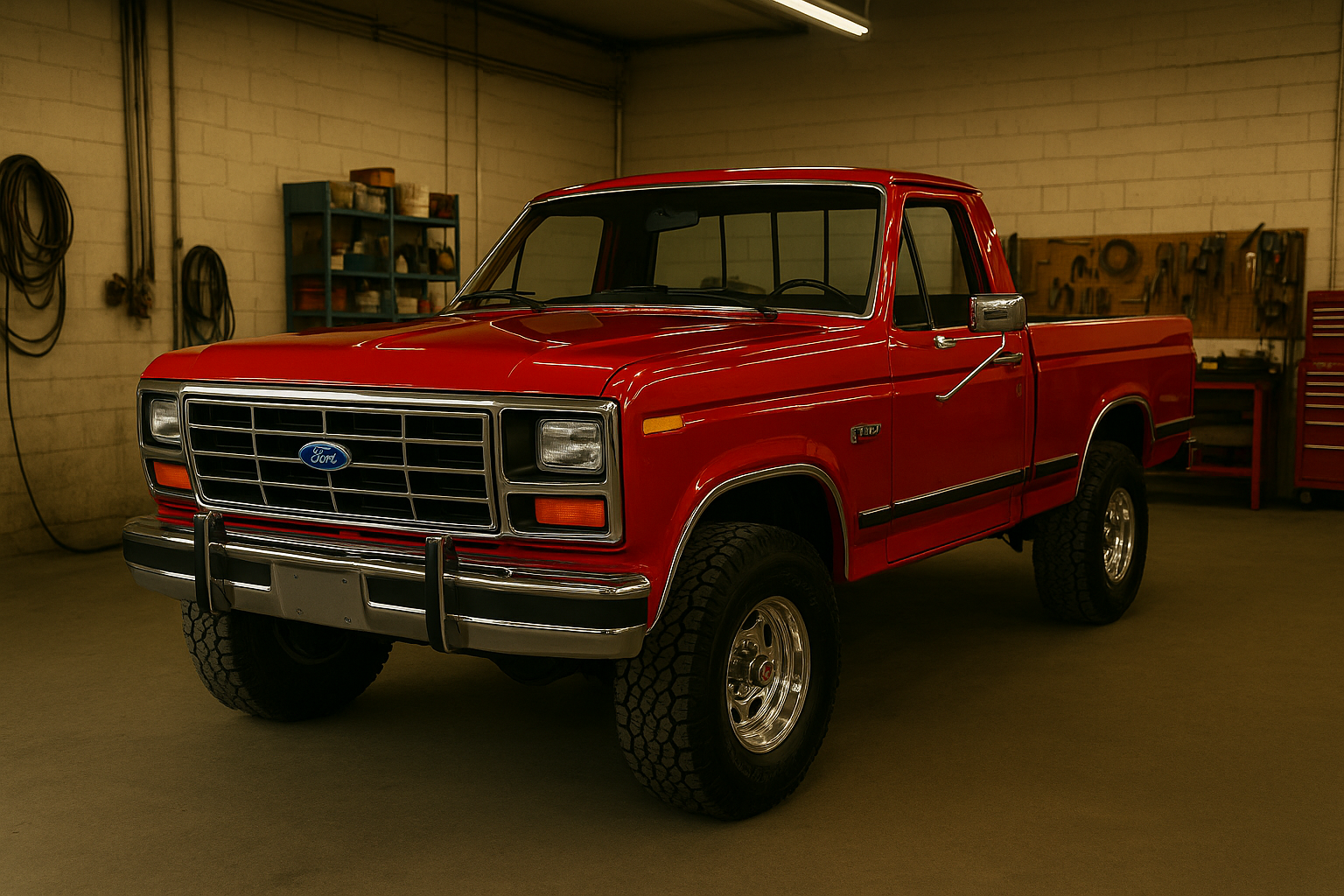
Verdict: The definition of reliable if you’re willing to keep it simple.
Not fast, not flashy, but will outlive your daily driver.
These trucks are the definition of “good enough.” If you want the least complicated engine bay on the road, start here.
Rot Report: Where Bullnoses Eat Themselves
You want a Bullnose? Cool.
But take a dang flashlight.
Tap around the cab mounts, rear cab corners, and bed crossmembers.
These trucks rot in silence.
I’ve lifted clean-looking ‘82s only to find the frame flaking like burnt toast.
Don’t trust a Midwest truck without a crawl underneath.
1987–1991 (8th Gen "Bricknose"): Electronic Fuel Injection and Old-School Grit
Ford started modernizing here—but didn’t kill the charm.
You still get the boxy looks and tough hardware, but now with fuel injection and slightly better manners on the road.
The 'Bricknose' trucks tried to bring Ford into the electronic age without scaring away the old-timers. It mostly worked.
Evidence:
- Engines: Same lineup, now all EFI. 5.0/5.8L V8s, 4.9L I6.
- Improvements: Rear ABS, better ride, cleaner emissions.
- Flaws: Early E4OD trans failures, crusty wiring, rust.
- Price: $4,000–$10,000.
- Sold Price Trends: Steady appreciation—up 8–12% since 2022 for rust-free survivors.
- Common Repairs & Parts: TPS sensors ($30), O2 sensors ($40), fuel filters ($20), E4OD rebuild ($2,000–$2,800)
Shop Story: Replaced an O2 sensor, a TPS, and a fuel filter on a '90 with 300k.
Ran smoother than a new Tacoma.
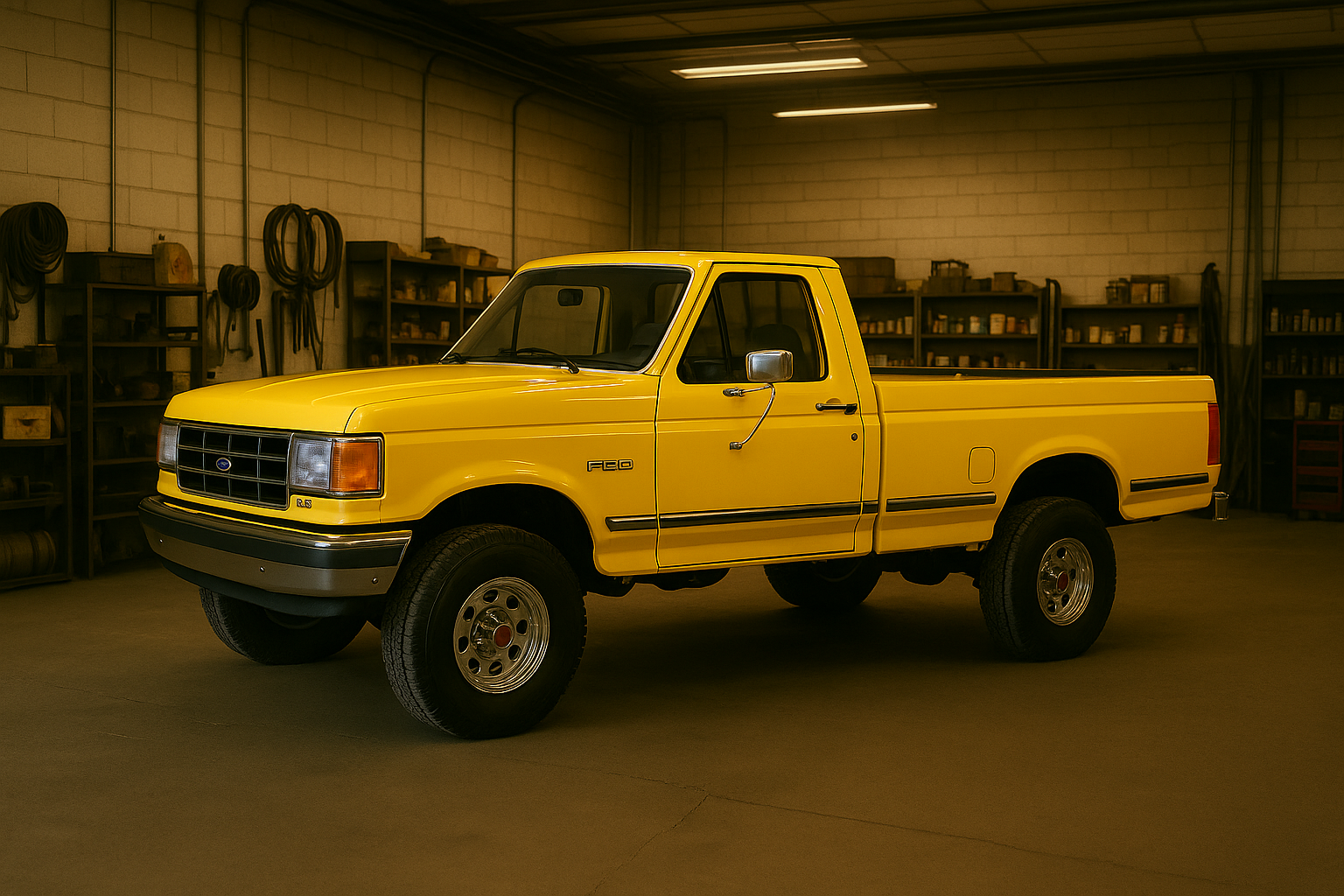
Verdict: Still basic. Still rugged.
But with enough electronic sophistication to cold start in winter.
If you want a no-BS hauler that can commute and work, this one delivers.
It’s the bridge between ancient simplicity and 90s functionality—and it holds up.
The E4OD: Ford's Fancy 4-Speed With a Death Wish
Here’s the deal—if your Bricknose has the E4OD automatic, you better pray the last guy added a cooler.
These boxes hate heat like cats hate water.
No cooler and a trailer?
Say hello to $2,500.
Shifts sloppy or bangs into 3rd?
Budget for a rebuild or start scoping ZF5 manuals on Craigslist.
1992–1996 (9th Gen "OBS"): The Fan Favorite
These trucks hit the sweet spot.
The last of the old-school Fords before the jellybean years.
Classic square body, simple electronics, and mechanicals that just don’t quit.
If you grew up in the 90s, this was the truck you saw in your neighbor’s driveway with a bed full of mulch and a dog hanging out the passenger window.
Evidence:
- Engines: 300 I6, 5.0/5.8 V8, 7.5 V8.
- Transmissions: 5-speed manuals and 4-speed autos.
- Notable Issues: Rust, TFI ignition modules, worn bushings.
- Price: $5,000–$15,000 (and climbing).
- Sold Price Trends: Up 20% in three years. Clean examples increasingly scarce.
- Common Repairs & Parts: TFI modules ($40), trailing arm bushings ($80), brake rotors ($60/each), radiator replacements ($200)
Shop Story: Guy with a '95 F-150 XLT 4x4. 280,000 miles. Said the only thing that failed was the radio.

Verdict: If you want a classic that you can still daily without crying, this is the one.
Collectible, reliable, and surprisingly comfortable.
A solid investment if kept clean.
It looks right, feels right, and doesn’t ask much. This one’s not just a truck—it’s a time capsule that still gets the job done.
Rust in Reverse: The OBS Corrosion Trap
You think that OBS is clean? Cool.
Now pull the bedliner and crawl in the tailgate.
OBS trucks rot from the inside out—behind trim panels, under cab corner plastics, inside the doors.
I’ve seen trucks with mint paint and Swiss cheese underneath. Trust steel, not shine.
1997–2003 (10th Gen): Round Styling, Triton Terrors
Ford took a bold design leap in '97, trading the square-jawed, work-truck silhouette of the past for a rounded, aerodynamic body and a more plush cabin.
It was a sign of the times—Americans wanted comfort with capability.
But the sleek redesign hid a mechanical minefield.
Underneath the refinement were engines that would become infamous for self-destructing spark plug threads and composite intakes prone to cracks.
Evidence:
- Engines: 4.2L V6, 4.6L V8, 5.4L 2V V8 (Triton)
- Known Issues:
- Spark plug blowouts due to weak threads (4.6/5.4)
- Intake manifold cracks (plastic composite)
- Timing chain rattle (high-mileage 5.4s)
- Price: $2,500–$8,000
- Sold Price Trends: Slight decline; avoided by collectors but still active among work truck buyers
- Common Repairs & Parts: Spark plug thread repair ($300–$700), intake manifold ($500–$900 installed), timing chain kit ($1,200–$1,800)
Shop Story: Customer’s '01 F-150 5.4L sounded like it coughed up a grenade in the parking lot.
Spark plug exited the head.
We Helicoiled the threads.
Still ran fine, but he traded it two weeks later. Said he couldn't sleep hearing that “pop.”
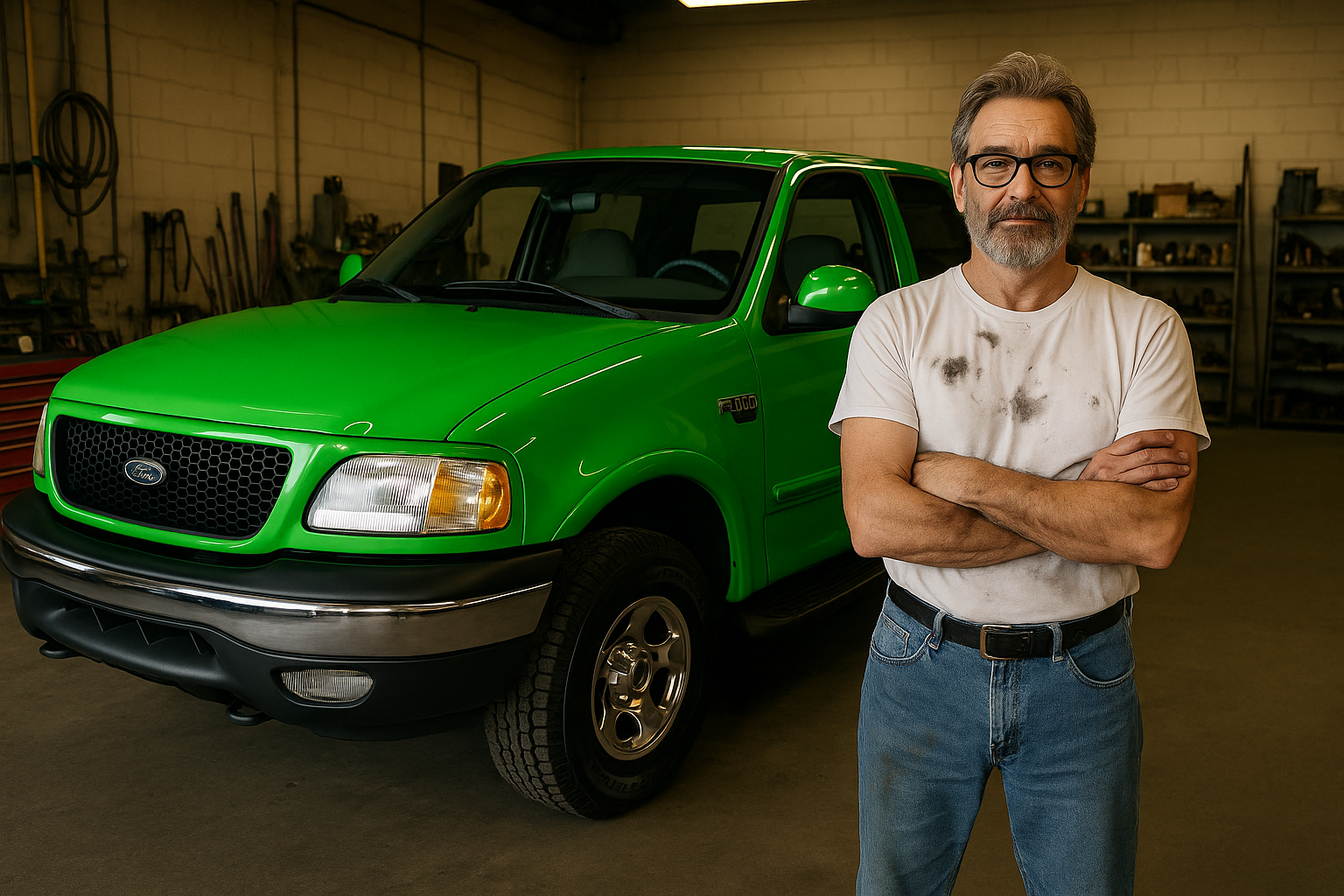
Verdict: You get a comfortable cabin and decent looks, but the Triton’s baggage is real.
Spark plug ejection, intake leaks, and timing issues can turn a cheap truck into a financial sinkhole.
If the major fixes are documented and the truck's price is right, it could make a solid beater.
If not? Walk away. There are better deals a few years newer.
2004 Heritage: The Budget Truck That Outsmarts the 11th Gen
Here’s your hack—2004 had two F-150s.
The new body style everyone knows... and the leftover 10th gen they called the "Heritage."
Same square look, same Triton drama, but often fewer issues than early 11th gen nightmares.
If it’s got the 4.6 and documented plug repairs? That’s your budget beater.
Think that’s rough? Wait till you see what happened when Ford tried to "fix" the Triton—and made it worse.
2004–2008 (11th Gen): Big Body, Bigger Headaches
Ford went bold again.
Boxy body, heavy-duty frame, luxury-car interiors.
This was the start of the modern full-size pickup era.
But instead of solving the old engine issues, Ford added a third valve per cylinder to the 5.4L—and with it came cam phaser chaos and spark plugs that welded themselves into the heads.
Evidence:
- Engines: 4.2L V6, 4.6L V8, 5.4L 3V Triton V8
- Known Issues:
- Cam phaser failure (diesel-like clatter)
- Spark plugs break in head during removal
- Fuel pump driver module corrosion
- Price: $4,000–$12,000
- Sold Price Trends: Flat; values drop without engine work receipts
- Common Repairs & Parts: Cam phasers & timing job ($1,800–$2,500), spark plug removal/extraction ($400+), FPDM replacement ($80–$150)
Shop Story: Did full phasers and plugs on a '07 King Ranch.
Beautiful truck.
But the repair bill topped $3k. Owner said, "Wish I loved it less."
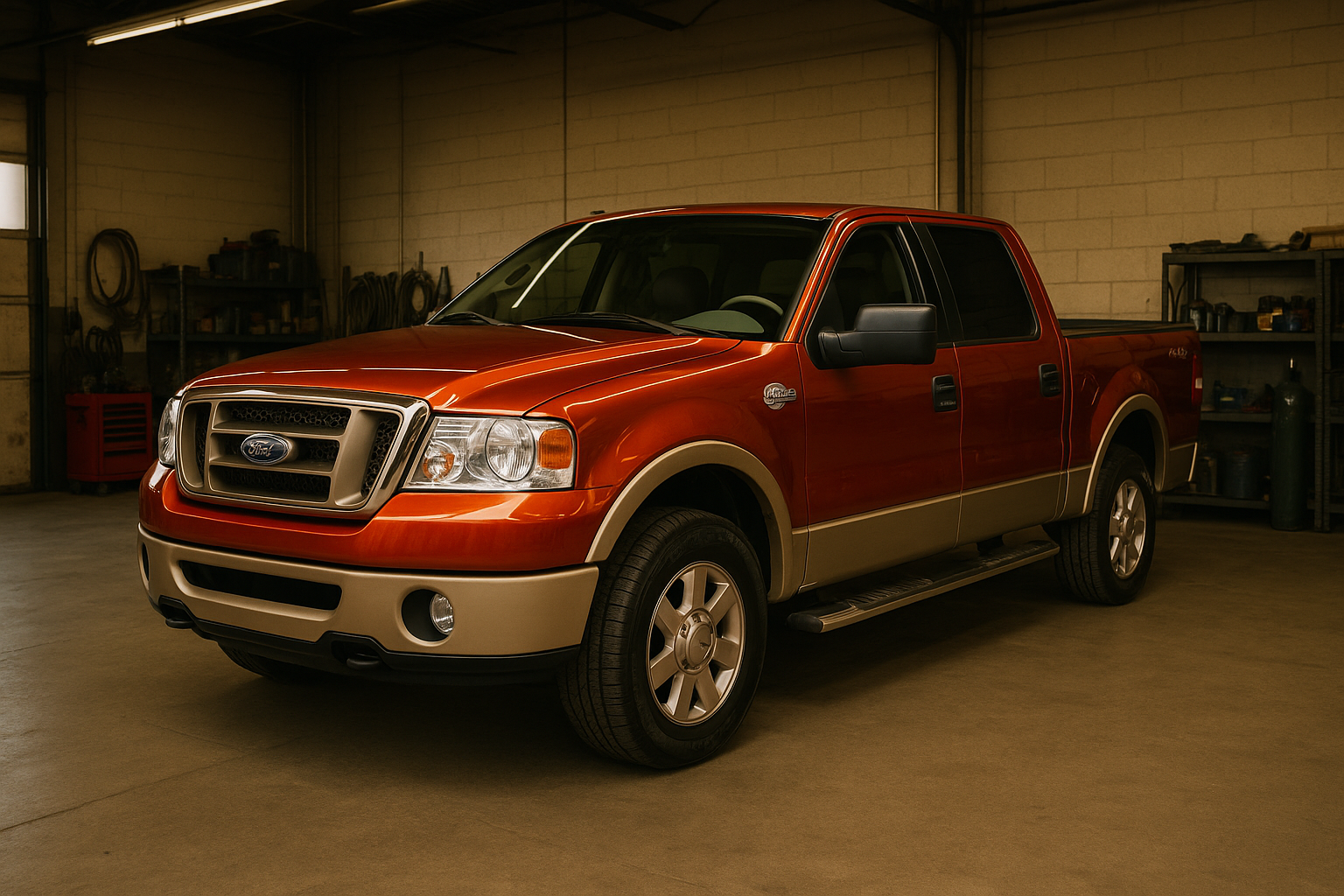
Verdict: Luxury meets landmine.
If the prior owner has done all the work, especially the phasers and plugs, it can be a nice ride.
But if you’re inheriting the problems?
You’ll feel it in the wallet. Only buy with records. And maybe earplugs.
Spark Plug Roulette: Ask This Before You Buy
Shopping a 5.4L?
Your first question should be: "Did the plugs get changed?"
If they say no, walk. If they say yes, ask how many snapped.
These engines eat plugs like popcorn—every broken one is a bill.
The Lisle tool helps, but trust me—some still take an hour each.
Don’t buy a truck full of fused spark plug grenades.
Done dealing with grenades under the hood? Let’s talk about when Ford finally got serious again.
2009–2014 (12th Gen): EcoBoost Arrives, Problems Begin to Fade
This generation marked a turning point.
The outdated 3V engines were phased out in favor of the powerful and efficient 3.5L EcoBoost and rock-solid 5.0L Coyote V8.
Frame strength went up, interiors got tech, and for the first time in years, the F-150 was as dependable as it was desirable.
Evidence:
- Engines: 3.7L V6, 5.0L V8, 6.2L V8, 3.5L EcoBoost V6
- Common Issues:
- Turbo condensation in early EcoBoosts
- Timing chain stretch (EcoBoost)
- Cam phasers (rare)
- Price: $10,000–$25,000
- Sold Price Trends: Slowly climbing; 5.0L and EcoBoost trucks retain value well
- Common Repairs & Parts: EcoBoost timing chain ($1,500–$2,200), intercooler upgrade ($600), 5.0L water pump ($400), coil packs ($45/ea)
Shop Story: 2012 FX4 EcoBoost with 210k miles.
Hauled a trailer weekly.
Only issue? One bad turbo, fixed under warranty.
Customer says it’s the best vehicle he’s owned.
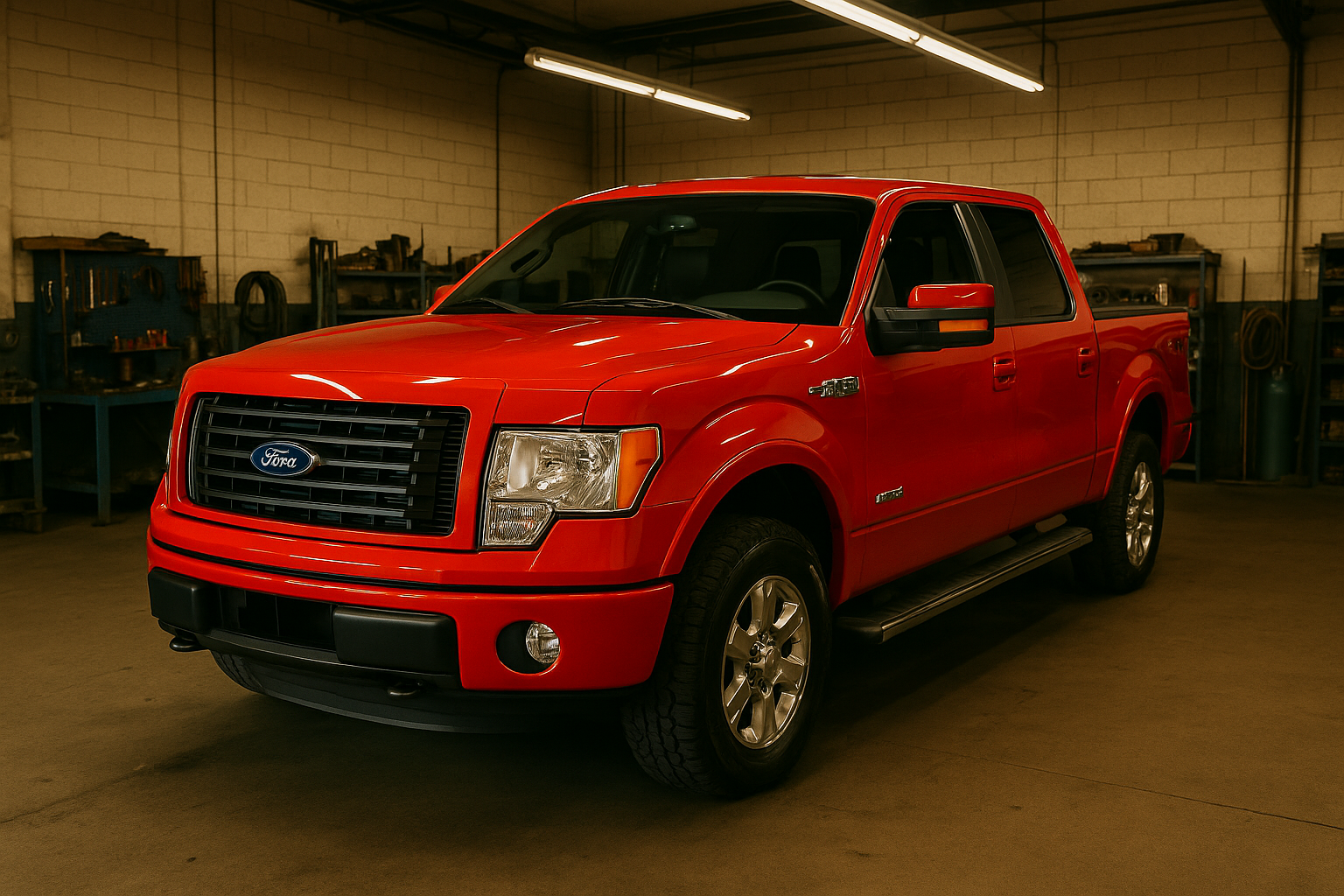
Verdict: This is your best all-around used F-150 under $20k.
Especially with the 5.0L—which is basically a Mustang engine in a truck.
EcoBoost is strong too if serviced properly.
These trucks can tow, haul, and take abuse. Check the service records and buy with confidence.
EcoBoost vs. 5.0: Your Wallet vs. Your Trailer
Here’s how it shakes out.
EcoBoost pulls harder and hauls faster—but once you’re past 100k, expect timing chains, turbo leaks, and maybe intercooler upgrades.
The 5.0 Coyote?
It’ll just need a water pump and a coil pack.
Want to save money? Go Coyote.
Want to merge like a freight train? EcoBoost’s your guy.
Think Ford peaked here? Let’s see what happened when they ditched steel—and went all-in on tech.
Know Exactly When To Buy Your F-150
I track F-150 listings across the country daily. Join my free price alert list and I'll tell you when F-150 prices hit the sweet spot—plus which specific VIN patterns to avoid based on my shop experience.
Join 12,000+ enthusiasts getting my insider price alerts
2015–2020 (13th Gen): Aluminum Evolution and 10-Speed Temptation
Ford made history again.
They dropped steel for aluminum to save weight, added a 10-speed auto, and rolled out more engine options than a German luxury car.
Reliability improved, but new tech brought new quirks.
This was the F-150 growing up—for better and worse.
Evidence:
- Engines: 2.7L EcoBoost, 3.5L EcoBoost, 5.0L V8
- Common Issues:
- 5.0 oil consumption (mostly 2018)
- Cam phaser rattle
- Early 10-speed shift issues (software fixes helped)
- Price: $20,000–$45,000
- Sold Price Trends: Holding steady; post-2018 models more stable
- Common Repairs & Parts: Cam phaser replacement ($1,500+), oil pan leak fix ($300–$700), 10-speed software update (dealer TSB)
Shop Story: Customer’s 2019 Lariat 5.0 burned a quart every 1,000 miles.
Ford replaced the short block under warranty.
No issues since.
Owner still daily drives it and calls it a "rocket with leather."
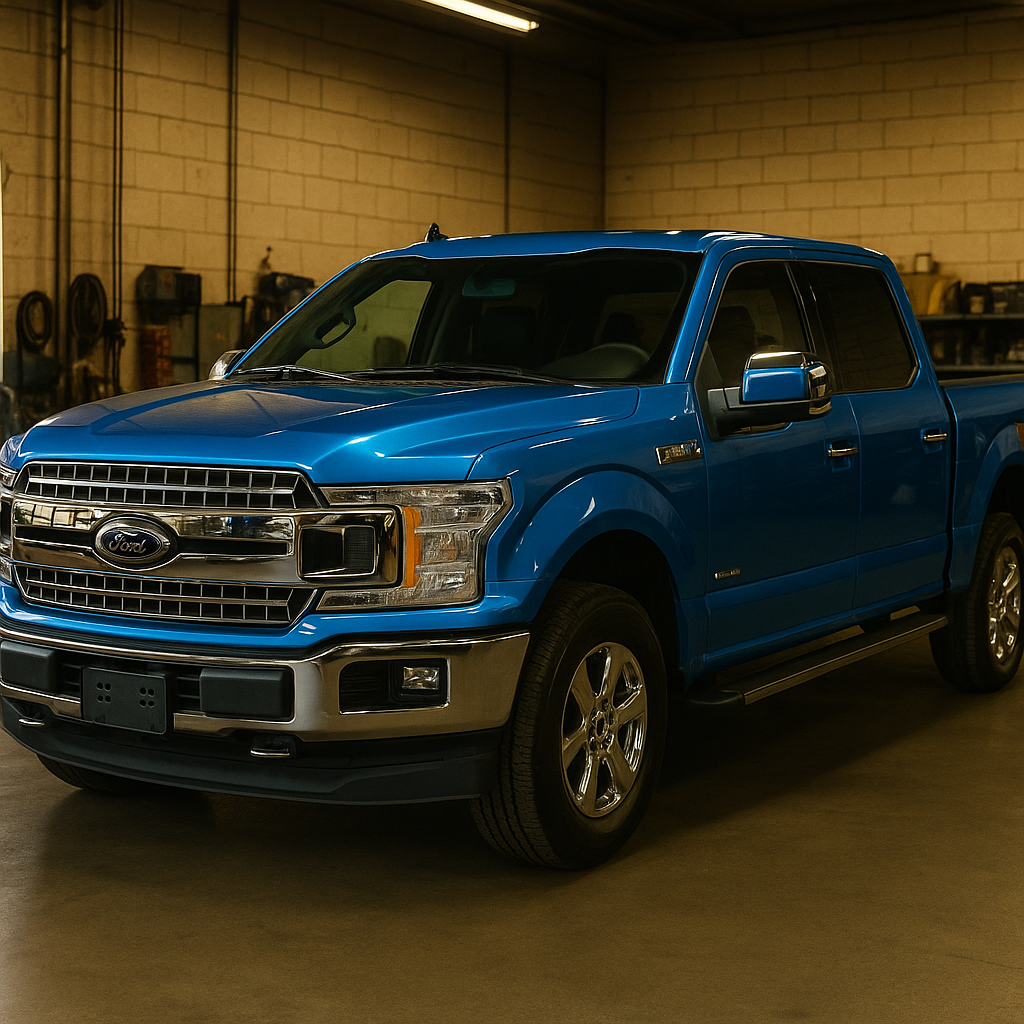
Verdict: Aluminum body means no rust.
10-speed keeps you moving smooth.
The 5.0 V8 post-2018 is a solid pick.
Just make sure the cam phaser and oil consumption issues were handled.
This gen is where modern and dependable finally overlap.
10-Speed Gamble: Smooth as Butter or Brick Wall Shifts
The 10R80 can be slick—or schizophrenic.
Especially in '17–'18 trucks, you’ll get downshifts that feel like a mule kick.
Cold start? Test every gear.
If it lurches, clunks, or plays transmission hopscotch? Skip it.
Ford patched a lot with software, but not all were cured.
Don’t pay Raptor money for a roulette gearbox.
And just when you thought trucks couldn’t get more high-tech...Here comes the era of hybrid torque and touchscreen overload.
2021–2025 (14th Gen): Hybrid Power, Tech Overload, and The Lightning Gamble
Welcome to the space-age pickup.
12-inch screens, onboard generators, electric motors, and hybrid torque that out-pulls yesterday's V8s.
Ford went all-in on features, but also introduced more complexity than ever before.
The result? The most capable, but also most complicated, F-150 yet.
Evidence:
- Engines: 3.3L NA V6, 2.7/3.5L EcoBoosts, 5.0L V8, PowerBoost Hybrid, Lightning EV
- Common Issues:
- Cam phasers (yes, again)
- Sync 4 bugs, sensor faults
- PowerBoost battery system glitches
- Price: $35,000–$80,000+
- Sold Price Trends: 5.0 and EcoBoost hold value; Lightning values dropped post-2023
- Common Repairs & Parts: Cam phaser TSB service ($1,400+), hybrid trans replacement ($3,000+), infotainment reset/module ($200–$600)
Shop Story: PowerBoost owner ran his house for two days during a blackout using onboard power.
When he brought it in for an oil change, I told him he basically owned a rolling generator.
He said, “Yeah, that’s why I bought it.”
Verdict: If you want cutting-edge, this is it.
But more tech = more risk.
The PowerBoost is a marvel—just don’t buy one out of warranty unless you love gambling.
The 5.0 or EcoBoost (with records) is safer.
Lightning? Cool, but watch depreciation.
If you want modern and don't mind complexity, this is the truck.
PowerBoost Panic: Hybrids That Won’t Go Into Drive
Here’s the ugly truth.
That PowerBoost might power your house—but some won’t even shift into Drive.
Early ones had hybrid trans failures before 50k miles.
Ford fixed most under warranty.
But in 2025? You’re on your own.
Check for recall history, test it cold, and if it glitches? Walk.
Unless you like wrenching on laptop-powered gearboxes.
Want chaos on four wheels? Let’s talk Raptors next.
The Raptor Factor (2010–Present): Desert-Dominating or Overpriced Show Pony?
The Raptor isn’t a truck. It’s a flex.
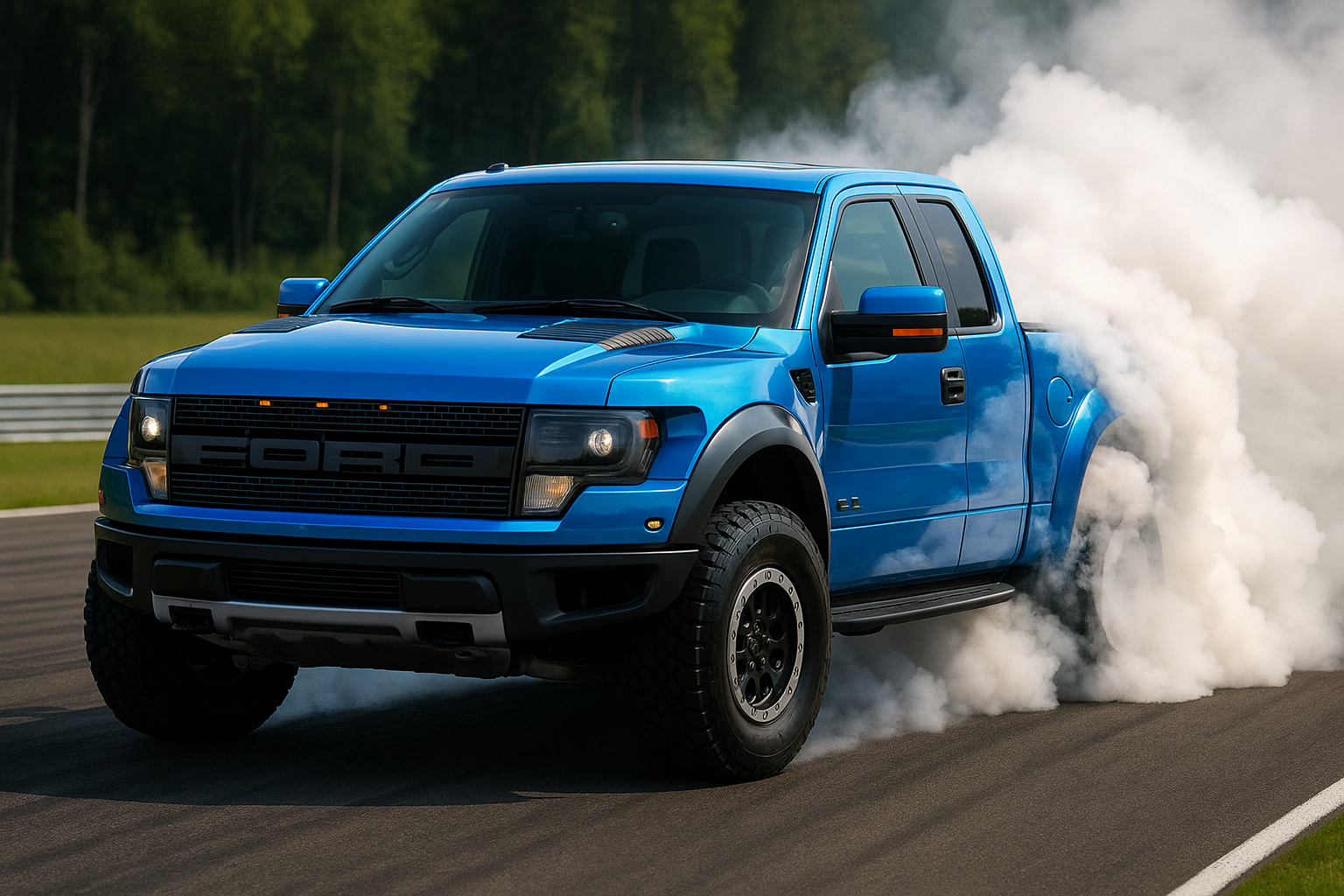
From Baja-ready suspension to Instagram-ready looks, this is Ford’s mad scientist experiment—and people love it.
Evidence:
- Gen 1 (2010–14): 5.4L/6.2L V8s. Built like a tank.
- Gen 2 (2017–20): 3.5L HO EcoBoost, 10-speed, lighter/faster.
- Gen 3 (2021+): Refined EcoBoost or go big with 700 hp Raptor R V8.
- Price: $25k–$100k+
- Sold Price Trends: Steady climb. Raptor R values sky high. Bring a Trailer Raptor R Sales
- Common Repairs & Parts: Fox shock rebuild ($2,000+), intercooler ($600), cam phasers on 3.5L ($1,500), 37-inch tire sets ($1,800)
Shop Story: Did full Fox rebuild on a Gen 1 with 180k miles.
Cost the guy over $3k.
He just smiled. Said, "Worth it every time I hit a dune."
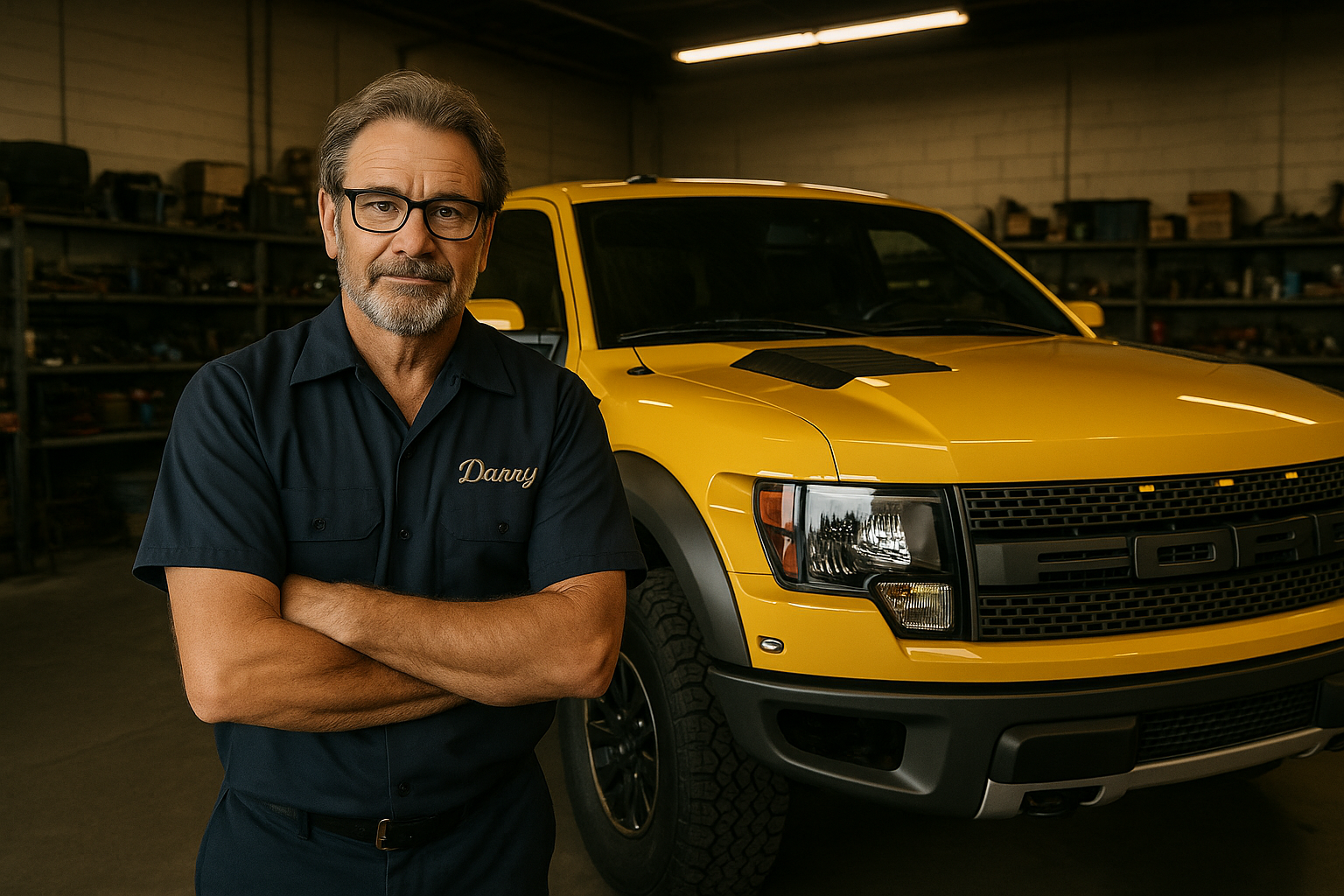
Verdict: If you need it, it’s unbeatable.
If you don’t? You’re wasting money.
The Gen 2 is the sweet spot for budget-conscious buyers.
The Gen 3 R? Only buy if you’ve got the wallet to match the horsepower.
Raptor Reality Check: Ain’t Built for Your Commute
Too many folks buy a Raptor and never see a dirt road.
Listen, unless you’re actually planning to send it over whoops or crawl through the desert, you’re just burning gas and flexing payments.
Fox shocks aren’t cheap, 37s wear fast, and turbo rebuilds don’t pay for themselves.
Want to look tough at Home Depot? Cool.
But this ain’t a mall crawler—it’s a race truck with cupholders.
Treat it like one or leave it for someone who will.
Final Word: What Should You Actually Buy?
- Best Old-School Workhorse: 1992–96 OBS F-150 with 300 I6
- Best Budget Modern Daily: 2011–14 F-150 with 5.0L V8
- Best All-Around F-150 in 2025: 2018–20 F-150 with 2.7 or 3.5 EcoBoost (post TSB)
- Best Luxury Truck: 2021+ PowerBoost or Lariat 3.5EB
- Best Off-Road Monster: Raptor R (if you’ve got $100k to spare)
Danny’s Ownership Math: What These Trucks Really Cost You
Everyone’s chasing power or price—but here’s the kicker: long-term cost is where F-150s separate into winners and wallet vampires.
- A clean 2012 5.0? Around $1,200/year in repairs if it’s been maintained. Coil packs, fluids, maybe a water pump.
- 2018 2.7 EcoBoost? Add turbo work and timing chain stretch—call it $1,800/year.
- 2021 PowerBoost out of warranty? God help you if the hybrid trans goes. Easily $3,000+ in parts alone.
You don’t just buy an F-150. You marry its repair bills. Pick a generation that fits your tolerance for pain—and your budget for parts.
Bottom line?
If you want the perfect mix of price, power, reliability, and resale value... Buy a clean 2014 or 2019 F-150 with the 5.0 V8 or a post-update 3.5 EcoBoost.
Avoid the Tritons unless they’re fully repaired. And unless you’re a suspension nerd or dune junkie? Leave the Raptor to the YouTubers.
Case closed.
Know Exactly When To Buy Your F-150
I track F-150 listings across the country daily. Join my free price alert list and I'll tell you when F-150 prices hit the sweet spot—plus which specific model years and trim packages offer the best value based on my 26 years of shop experience.
Join 12,000+ enthusiasts getting my insider price alerts

